After playing Half-Life with this new ray tracing mod, I need a cold shower in a dimly lit room
Just when I thought I was out, Half-Life pulls me back in
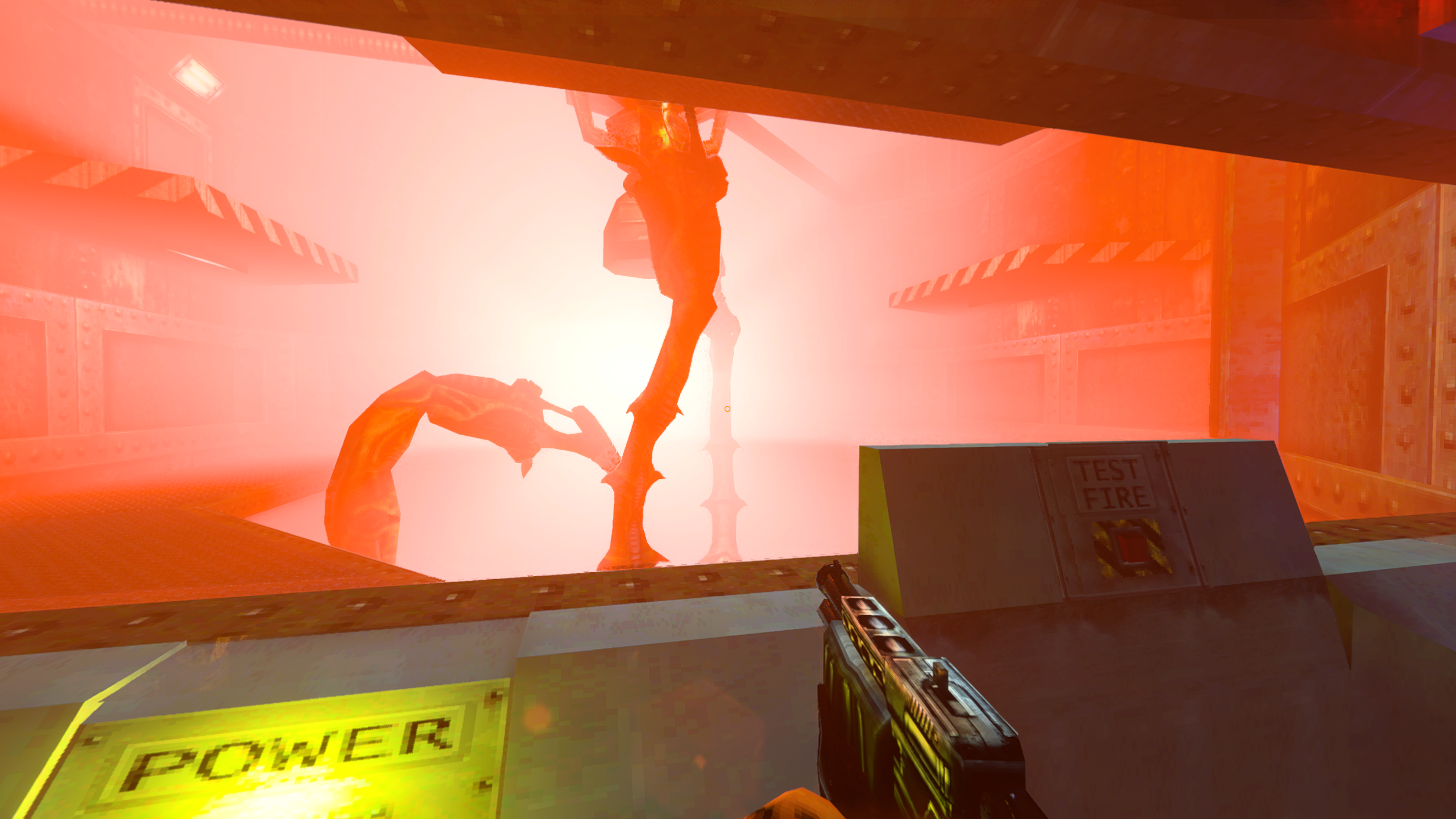
I've played the original Half-Life through to completion more times than I can remember. However, until very recently it's fair to say that I hadn't slipped back into Gordon's HEV Suit for a fair few years. I'd played Half-Life in all its forms and, simply put, I was out.
But then a talented modder called sultim_t released a mod that brought ray traced lighting to Half-Life and, well, just when I thought I was out sultim_t dragged me back in. I downloaded the mod and booted up Valve's seminal FPS classic.
My plan was to load up ray tracing-enabled Half-Life, have a quick 10-minute blast to see how it looked, and then move on with my life. After all, I've got about eleventy billion new PC games that need playing right now in my pile.
My plan immediately fell through, though, as before I knew it I'd played the game for well over an hour and found myself hooked back into the world of Black Mesa like never before. The ray-traced lighting not only looked gorgeous but elevated the immersion of the game to previously unseen levels.
And, well, seriously, you have to see ray traced Half-Life to believe it. As such, here is a selection of screenshots I've taken during my time with the game, along with some graphical notes and the official video trailer, showing just how the visual quality and immersion of the game is taken to new heights with ray tracing enabled.
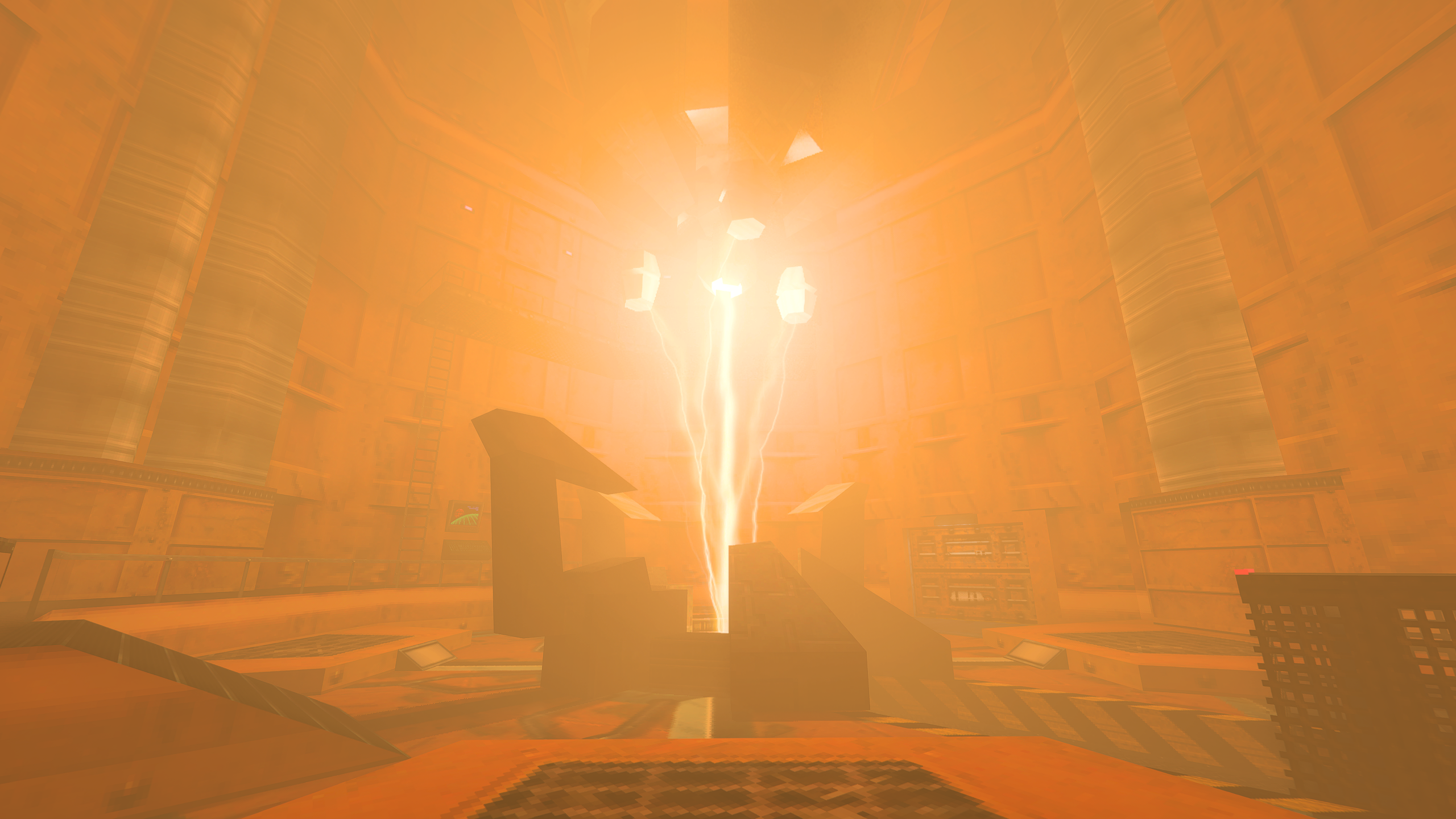
Let's start at the beginning and run chronologically for approximately half the game. This first image shows the inside of the test chamber. The ray traced lighting diffuses through the chamber, with the intense central light sources emanating out in vibrancy and brightness to the chamber's outer walls.
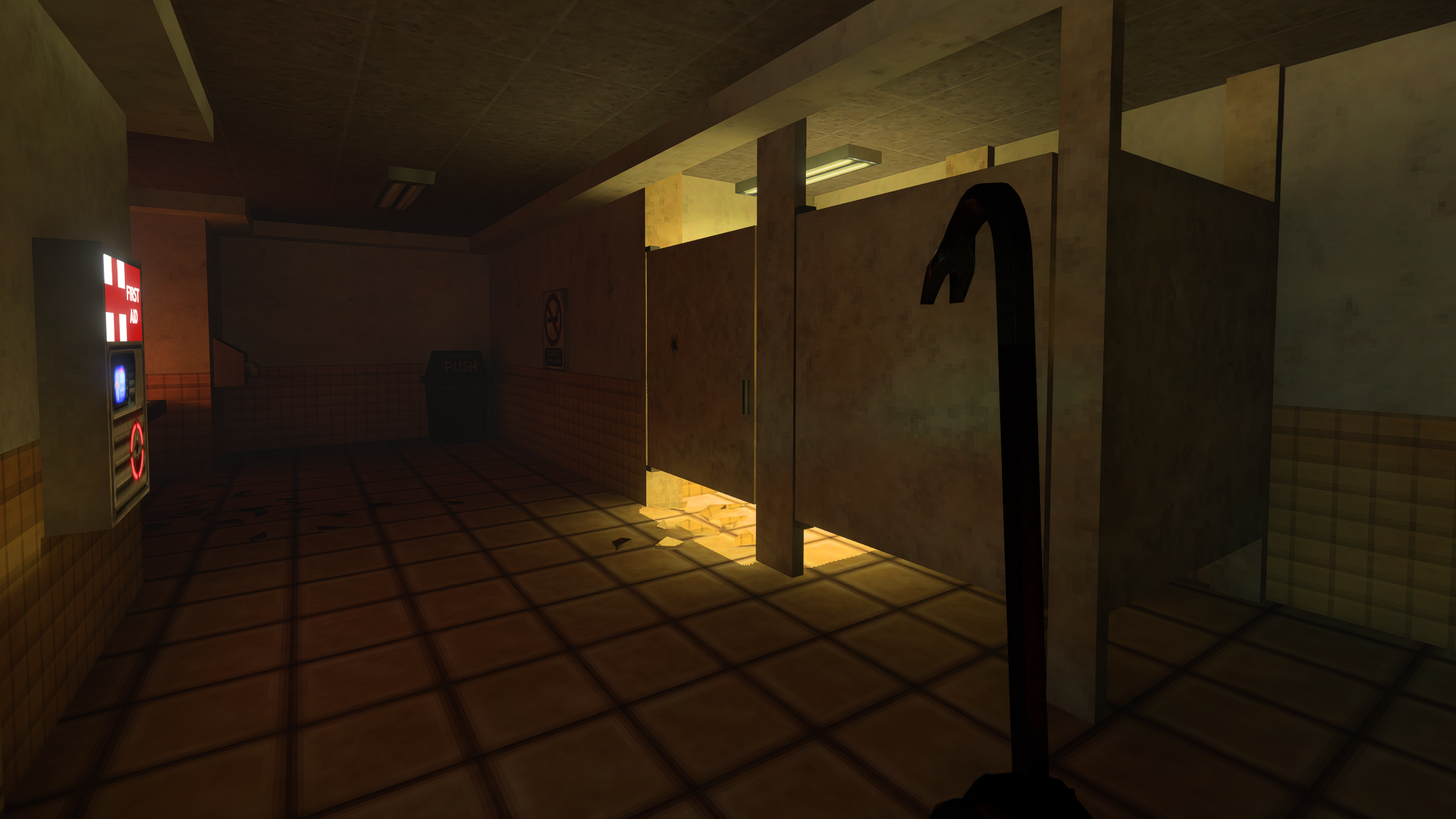
This image fantastically shows off the new ray traced lighting in effect. A strip light above one toilet cubicle shines down into its interior, with the cubicle brightly illuminated. However, with the cubicle's door closed, the light just creeps out from underneath and is contained largely within, leaving the otherwise unlit bathroom in gloom.
The biggest gaming news, reviews and hardware deals
Keep up to date with the most important stories and the best deals, as picked by the PC Gamer team.
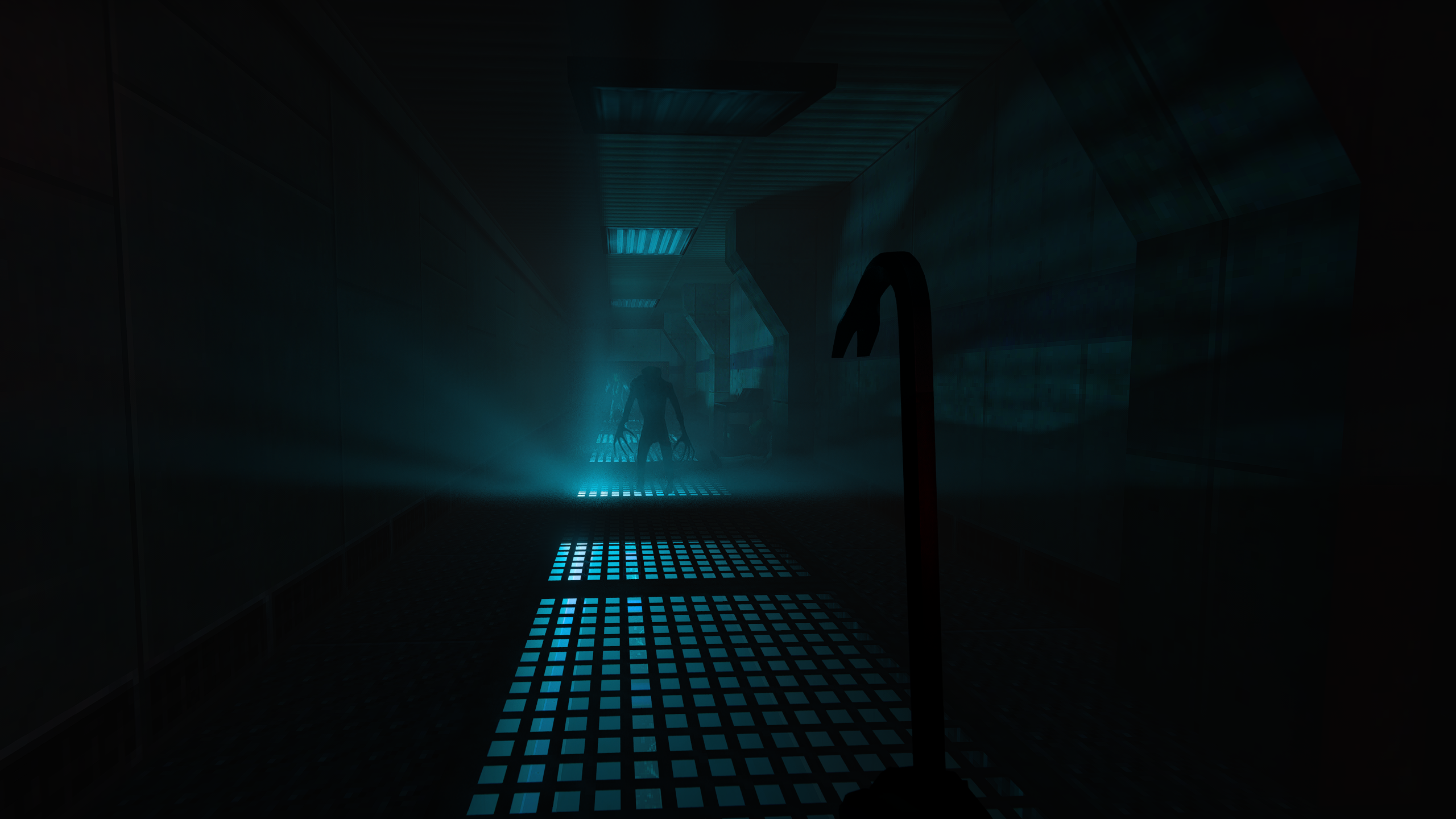
Just how freakin' atmospheric is this image! The only light source in this corridor comes from beneath its metal grill floor, casting an eerie faint bluey-green light into it from below. The approaching zombies' outlines are visible among the traced rays, but their fronts, which are facing away from the light source, remain dark and devoid of detail.
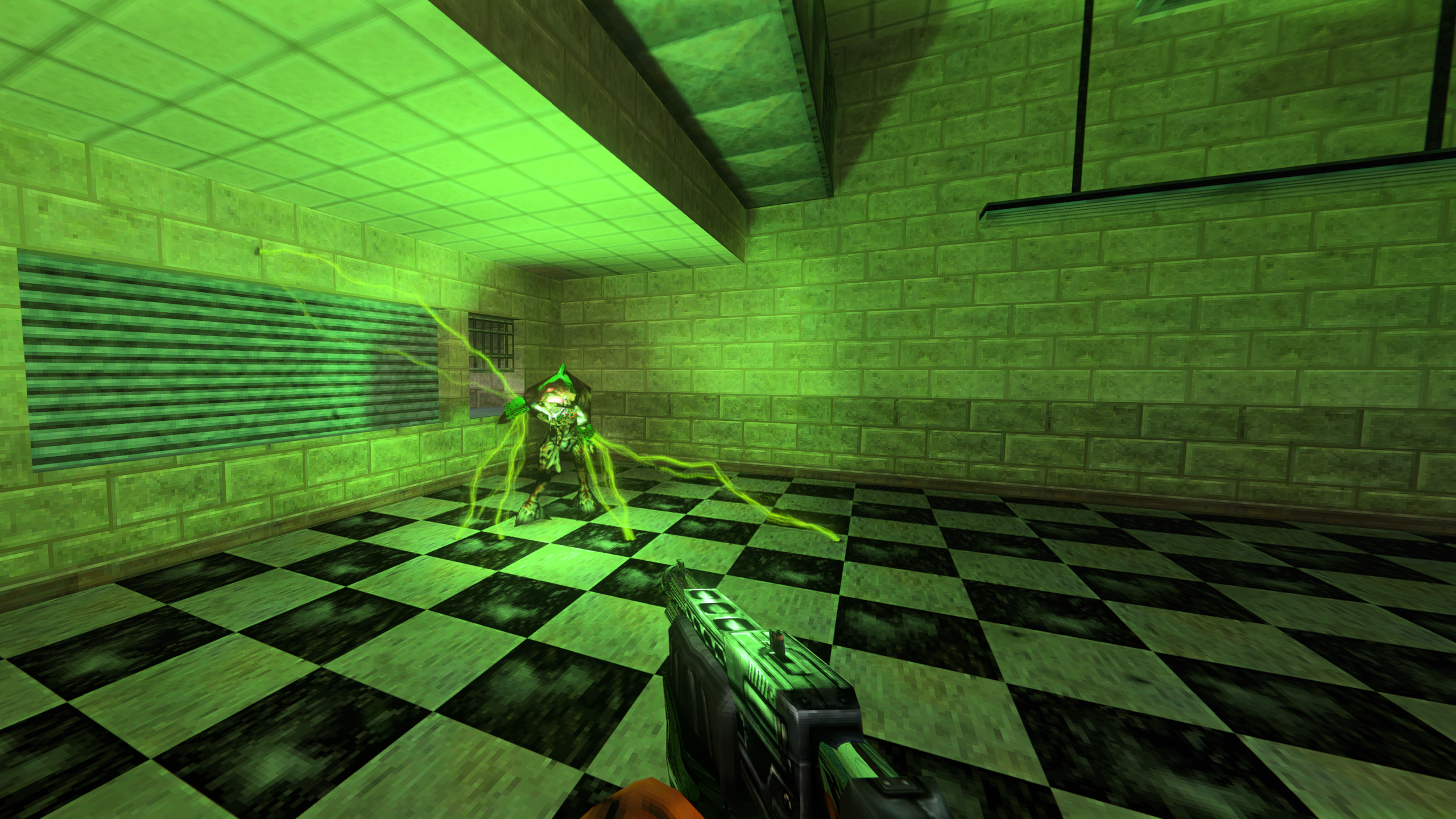
Here a Vortigaunt powers up an energy attack in an otherwise unlit room and its green aura illuminates just the corner of the room it is standing in, with the walls and floor bathed with the eerie alien light. Very atmospheric.
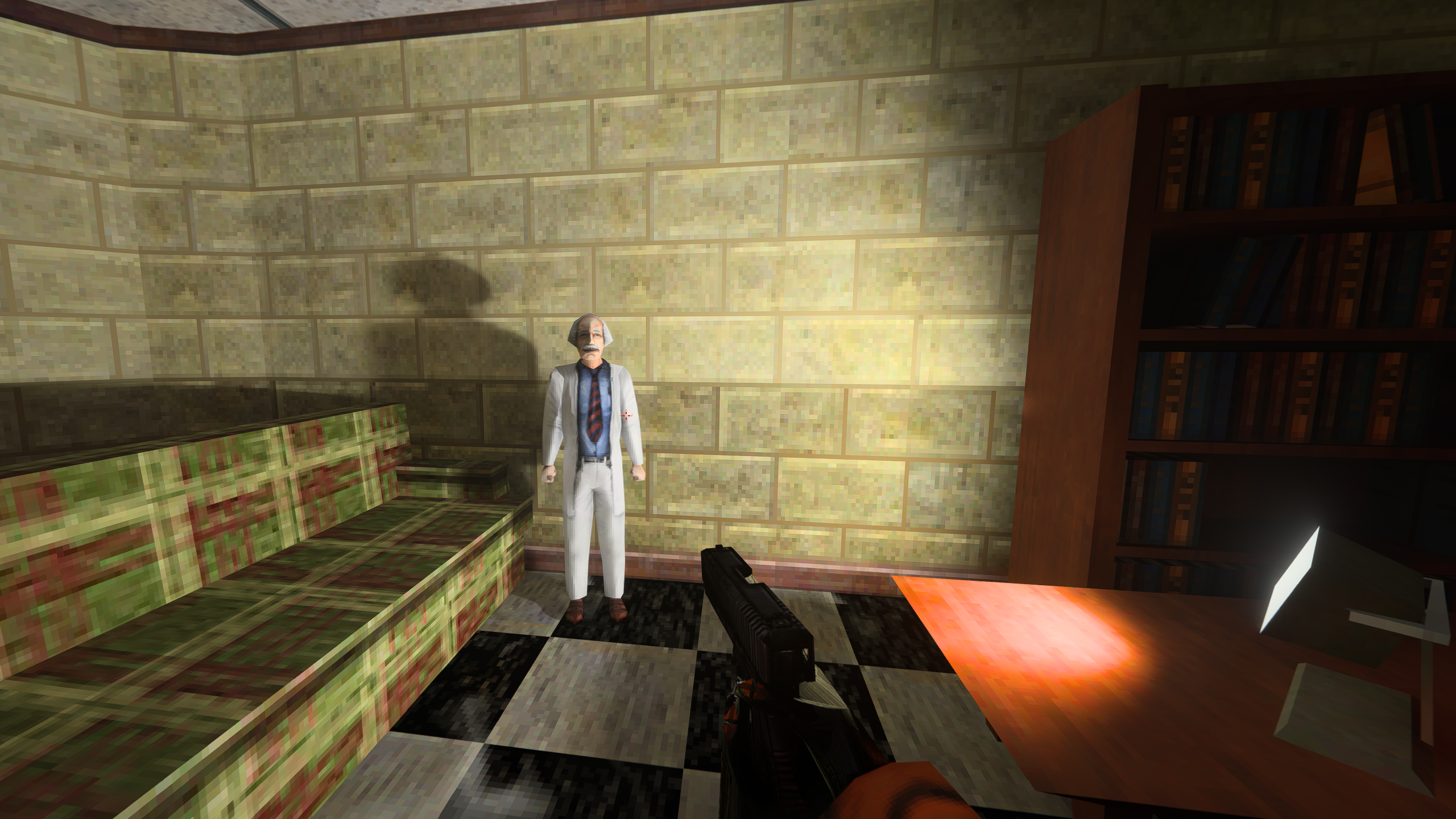
This is a great example of the extra levels of subtlety the not-faked lighting in the game now delivers. The desk lamp spills light onto the table, scientist and chair. The scientist's shadow is projected onto the wall, with the right-hand side of it sharper and more defined (as it is more behind the scientist and closer to the light source), while the left side is diffused out and is softer. The hard inanimate object of the chair casts a deep black shadow on the far wall.
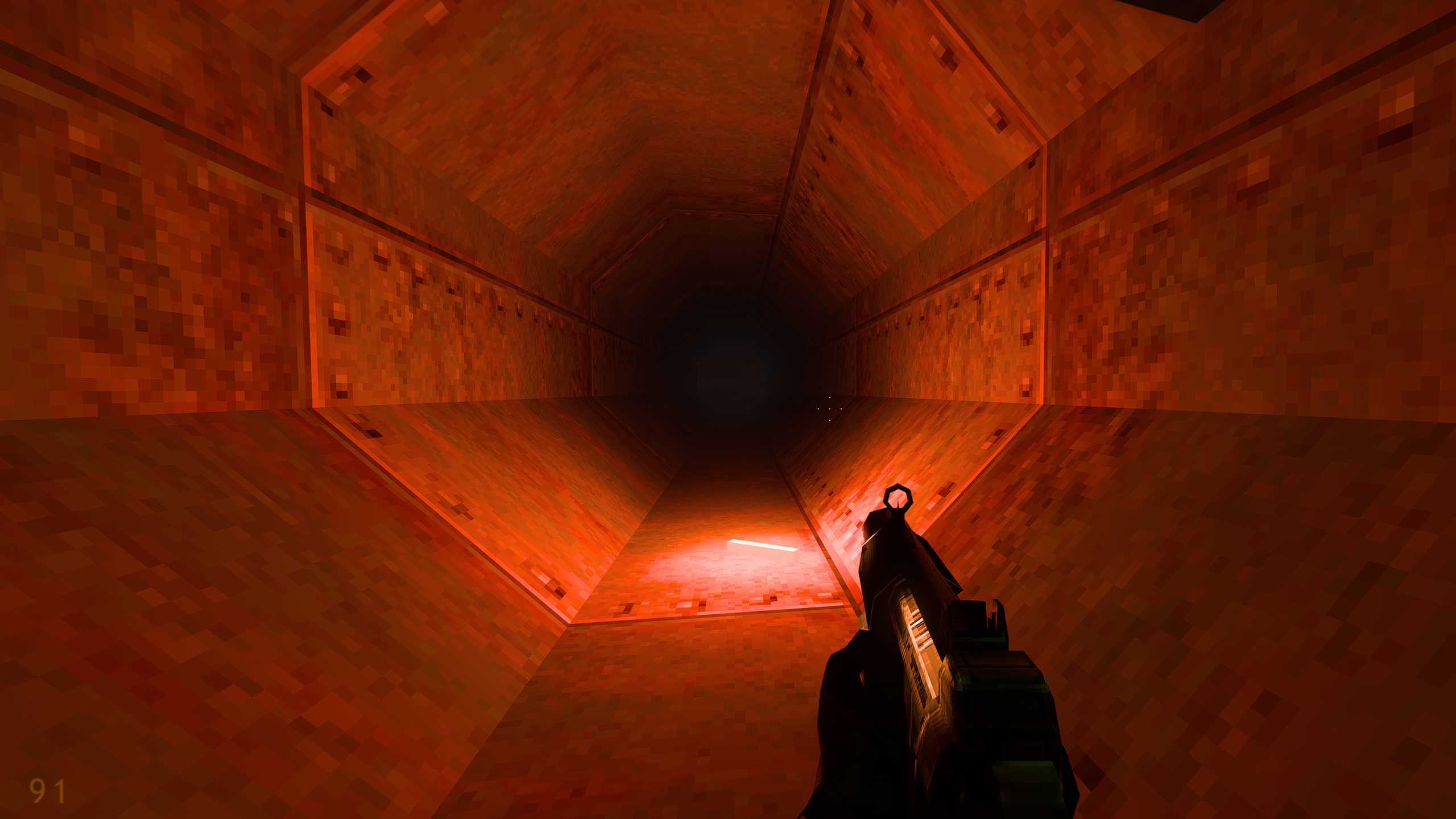
There are a lot of vents and pipes to navigate in Half-Life and, let me tell you, these are now so much more atmospheric and claustrophobic with ray traced lighting. Look at how here the single red light stick illuminates the pipe's interior but, beyond its limited reach, the pipe is plunged into darkness. Who knows what lies in wait for you in the blackness...
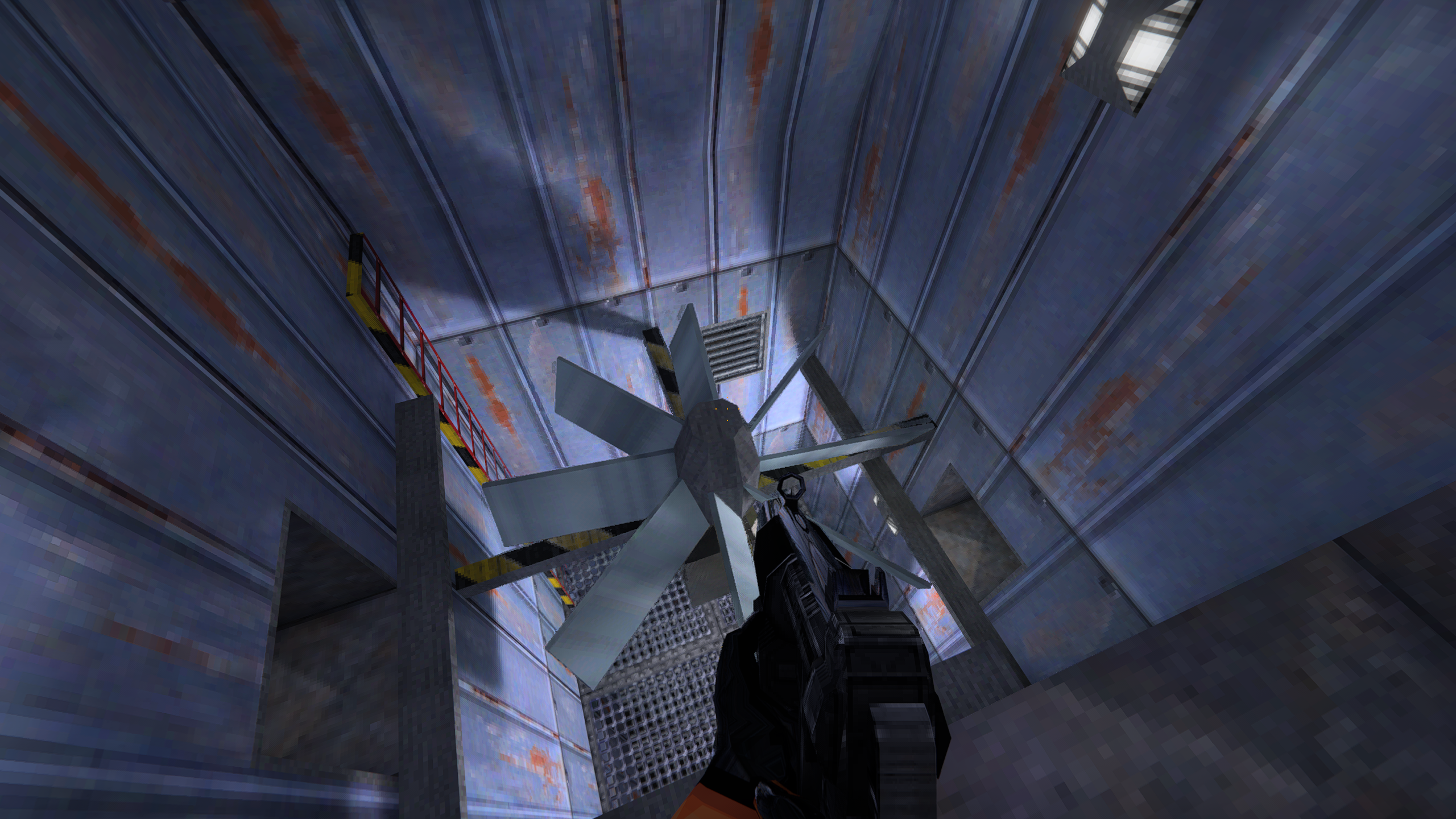
And talking of interiors, look at how the varying light sources and objects interact here in this fan room. Shadows from the fan's blades are splashed onto the room's interior in varying degrees of sharpness, while light sources bleed onto certain segments of the walls but not others.
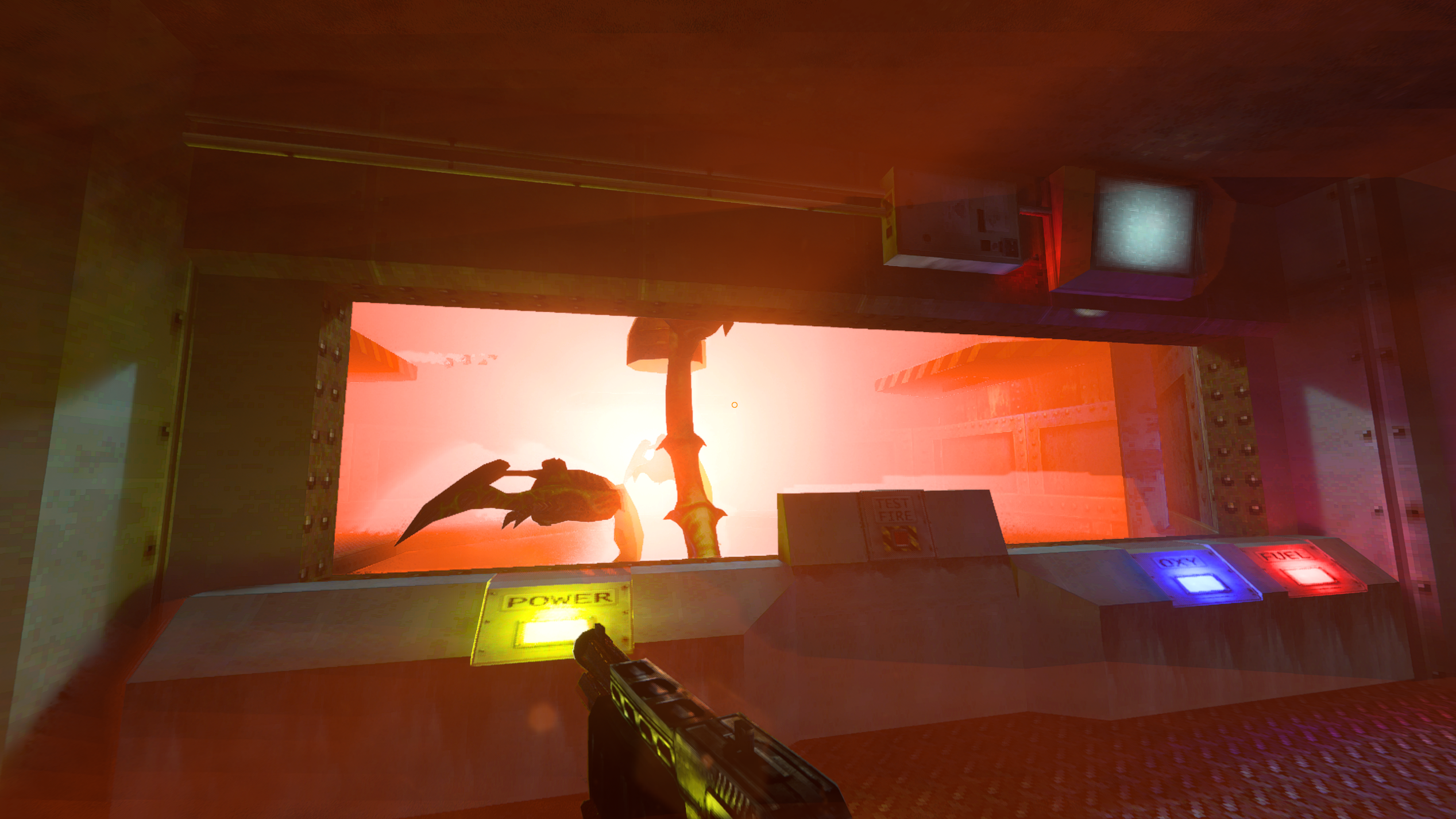
The infamous Blast Pit is a treat for the eyes now, with some incredibly atmospheric lighting shown off throughout. Here, the three tentacle Pit monster is torched, with the bright glow of the burn streaming in through the control chamber's windows. The coloured buttons of the console illuminate the surrounding console in yellow, blue and green, while the rest of the room remains dim.
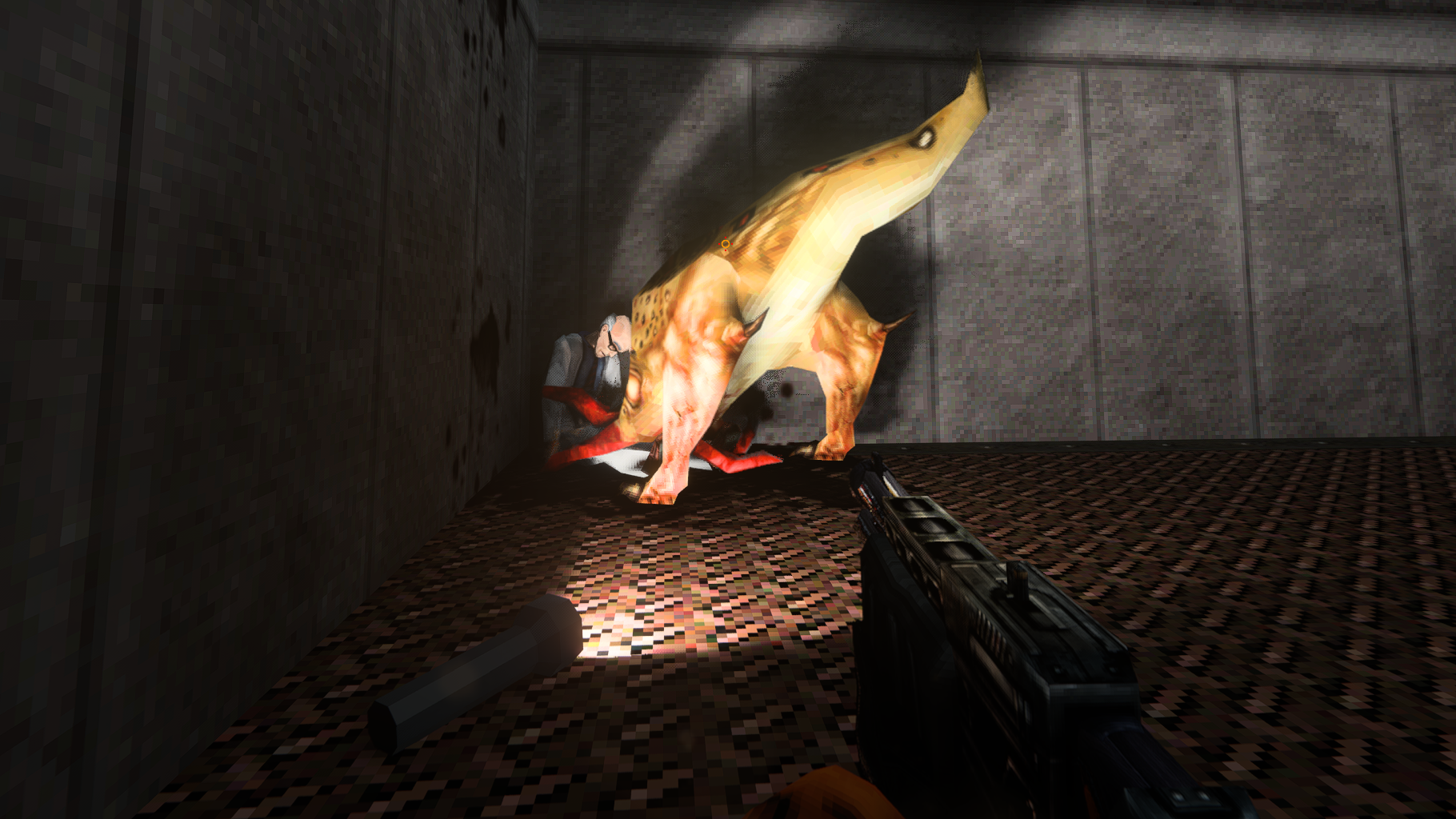
Similar to the scientist and desk lamp image above, this shows again how the ray traced lighting now leads to more accurate shadow representation. The Bullsquid's rear is brightly illuminated, while the poor soul it is eating remains in shadow.
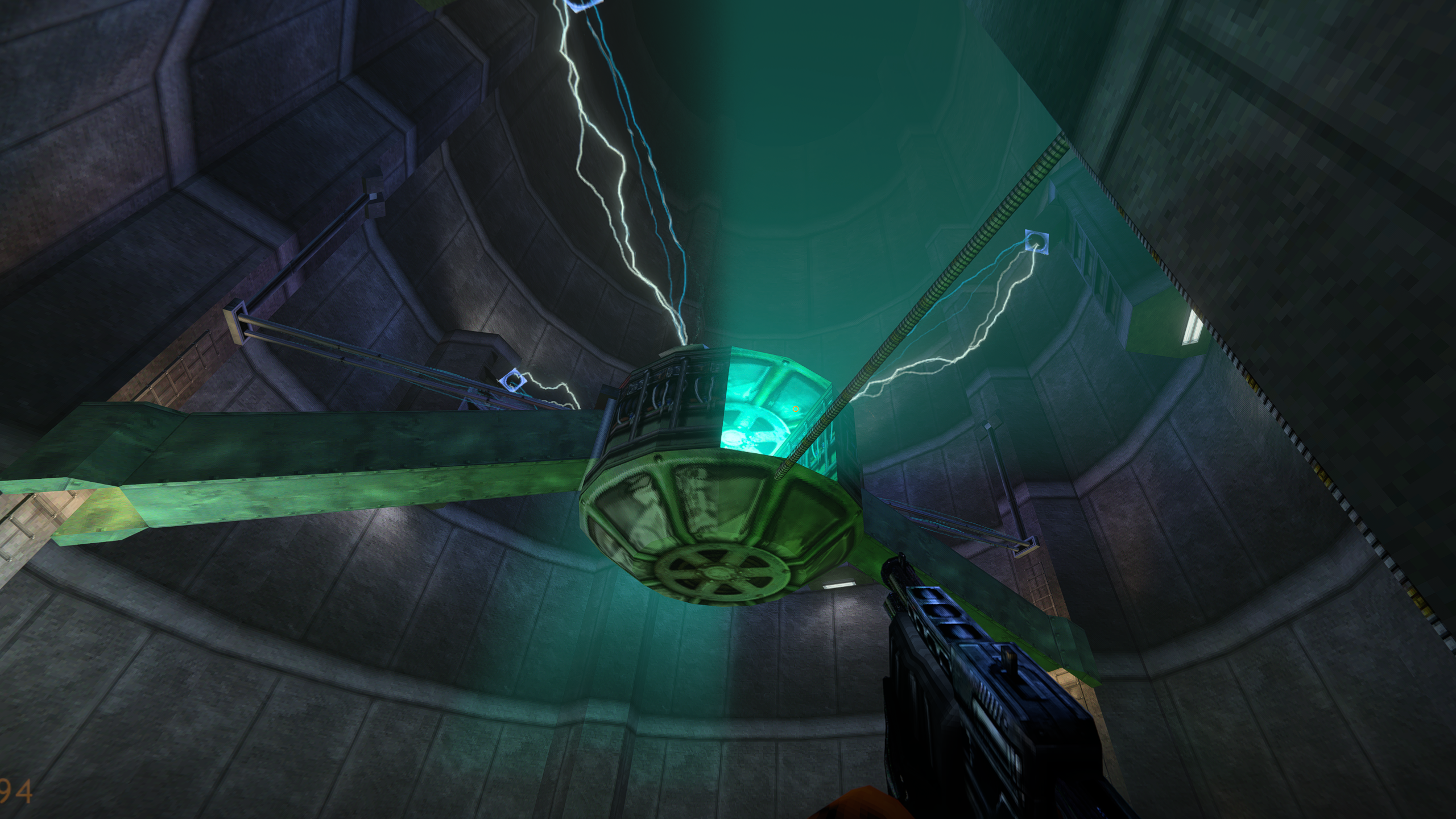
Here the bright lighting rays can be seen emanating from within the power control generator, bathing parts of the chamber in a white-blue light, but only in the directions where the generator has openings. The only other light points in the room, wall lights, faintly glow.
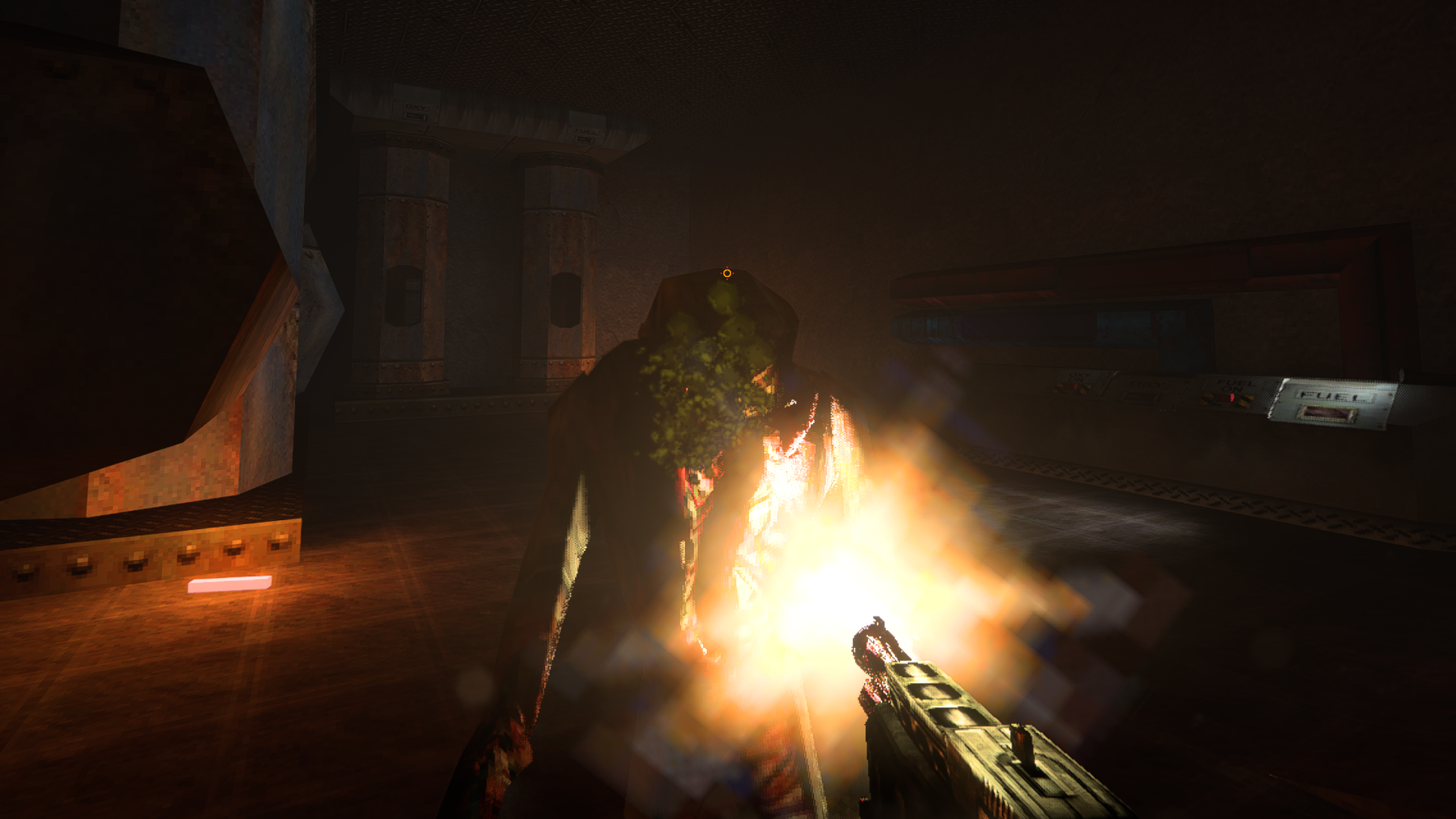
The cool thing with this Half-Life ray tracing mod is that it even extends to weapon muzzle flashes, too, as can be seen here in this image, with Gordon unleashing the full force of his shotgun into a zombie at point-blank range, an action that causes, specifically, the right-hand side of the monster where the gun is pointed to be lit up.
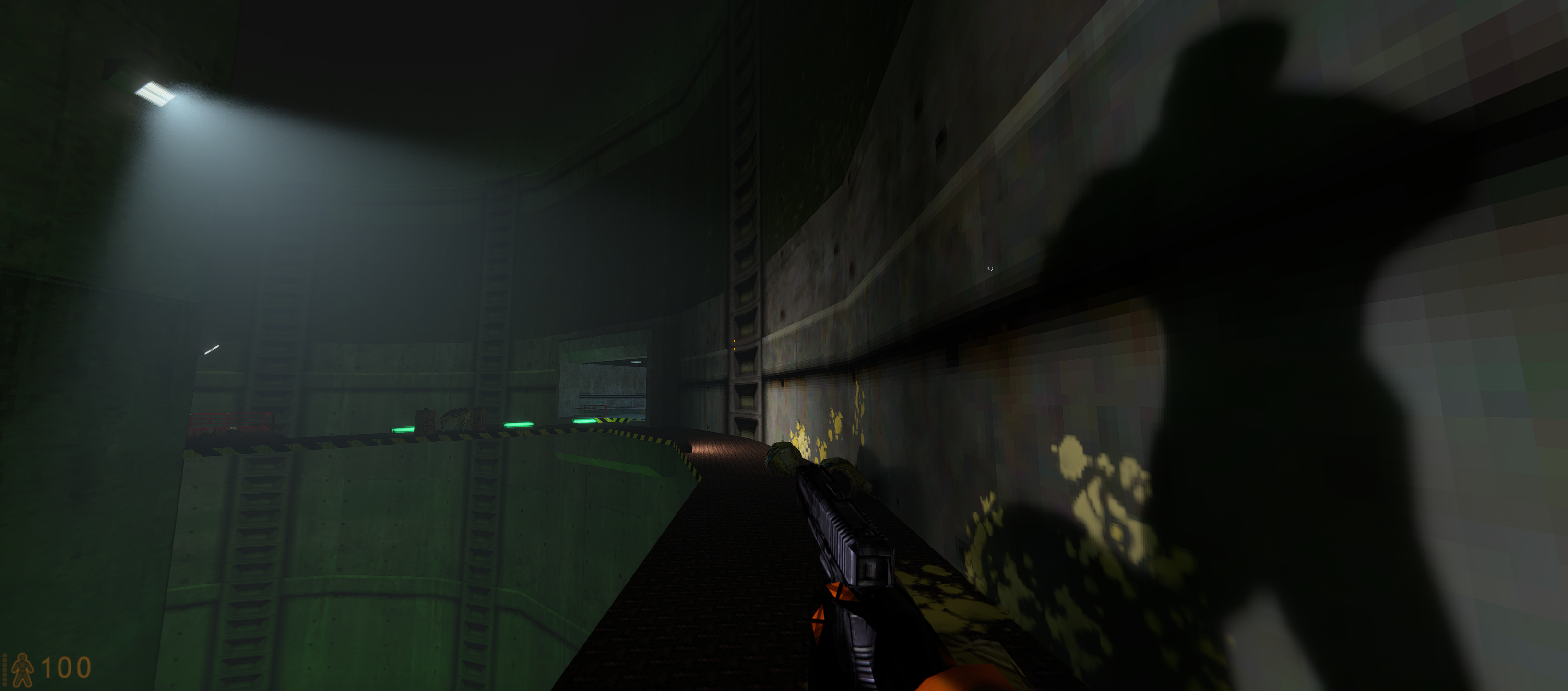
I love this image as it really shows you how much more atmospheric Half-Life is with ray traced lighting. Here, the vast chamber is only lit by lights on the left-hand side of the screen, a fact that causes Gordon's shadow to be cast on the right-hand wall. The limitations of the lights are clear, though, with non-lit areas plunged in shadow.
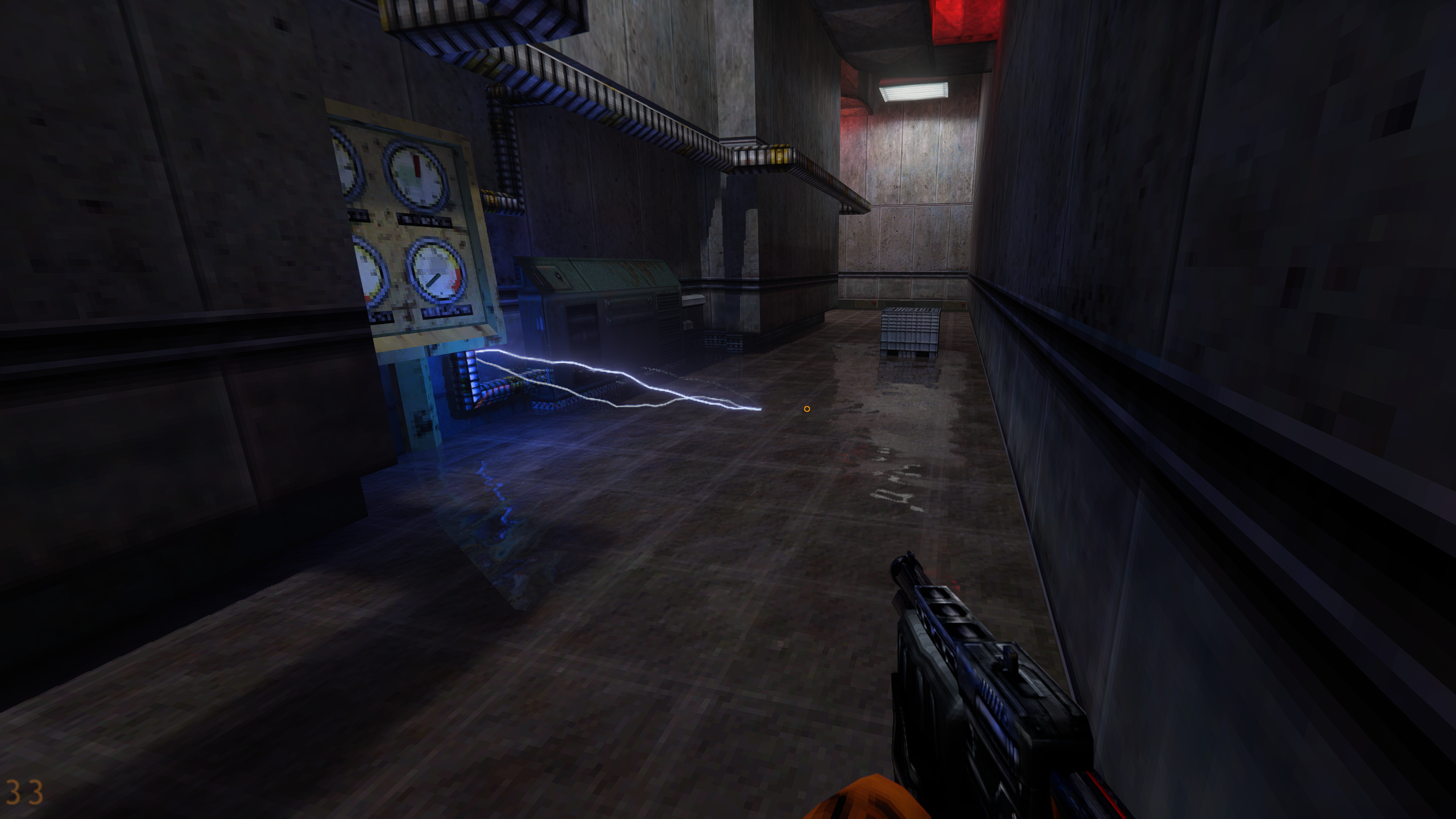
Of course, where there are reflected light rays there are reflections, and that is also true in ray traced Half-Life. Look here at this water-filled corridor. The corridor's lighting sources, as well as metal box, are reflected in the water pooled on the floor.
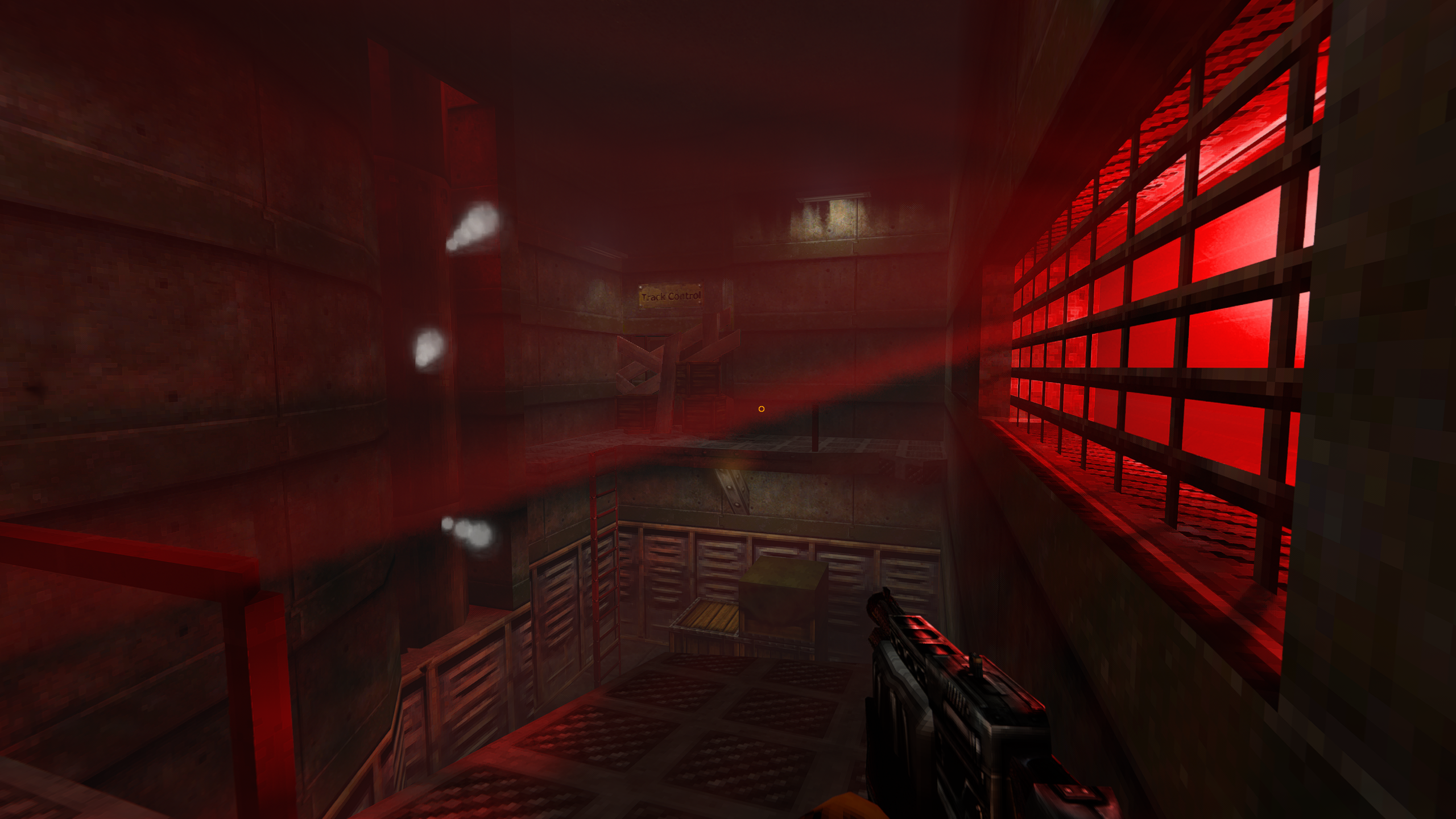
Just stunning! Look at how in this show the strong red light source from behind the right-hand wall's grill casts through into the room.
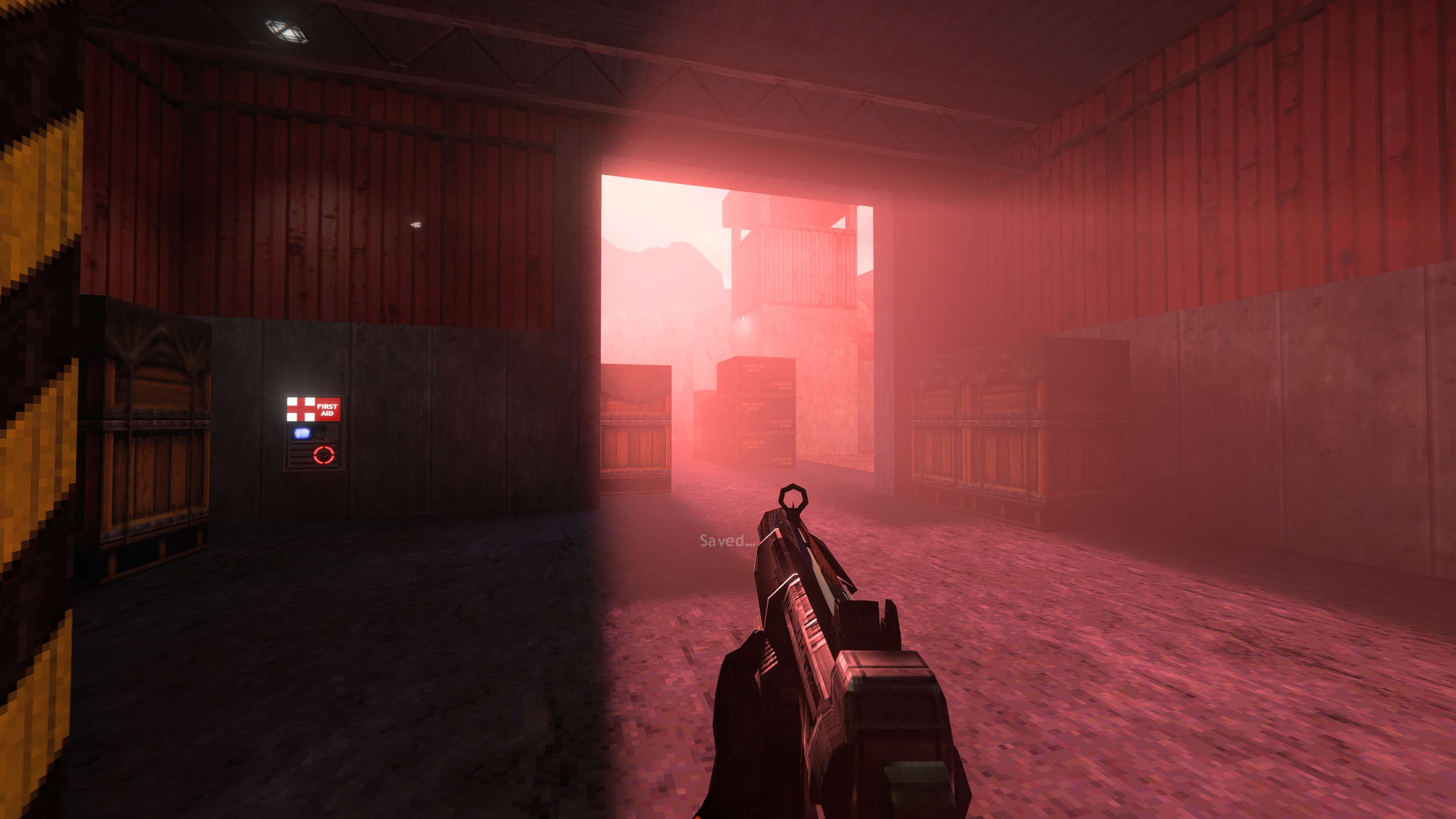
And when you start to get to areas of Black Mesa that are on the surface, and you're progressing into and out of structures, things only get even better. Look here how the ray traced light rays cascade in through the open warehouse doors, with diffused light illuminating the right-hand side while the left-hand side remains largely dimmed, a single ceiling light the only notable light source.
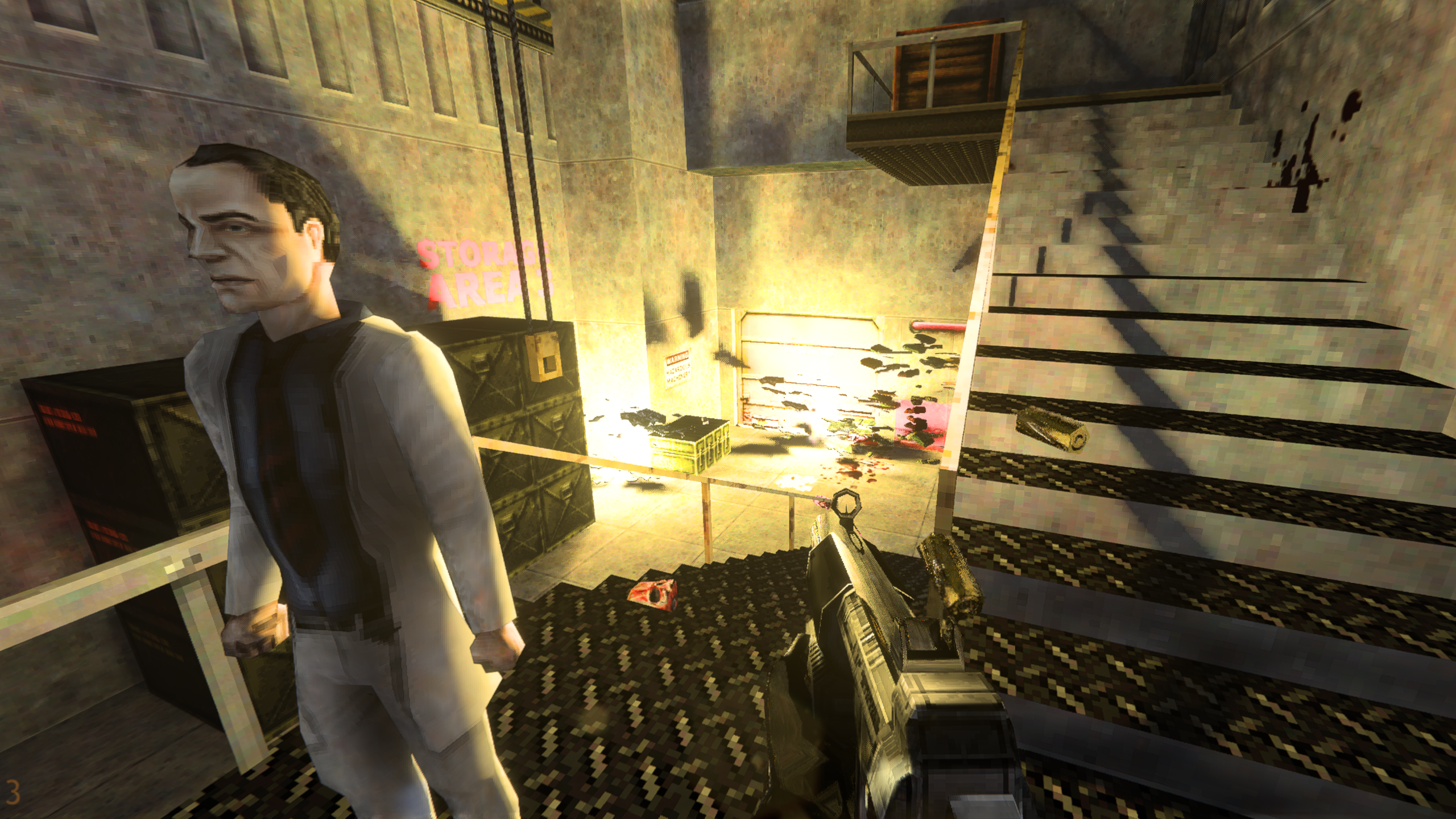
This one what happens when a bright light source is triggered in the game. Gordon fires on some explosive canisters and, exploding, they cast a bright light over the scene, with the rear of the scientist's lab coat brightly lit up (as it is facing the explosion), along with the walls in the near vicinity to the canisters. Shadows are generated from the staircase's handrail, too, cast onto the stairs themselves.

Here, the light from the exterior streams down into this vent area, with the descending marines bathed in light from above, thereby making them hard to discern in detail from below.
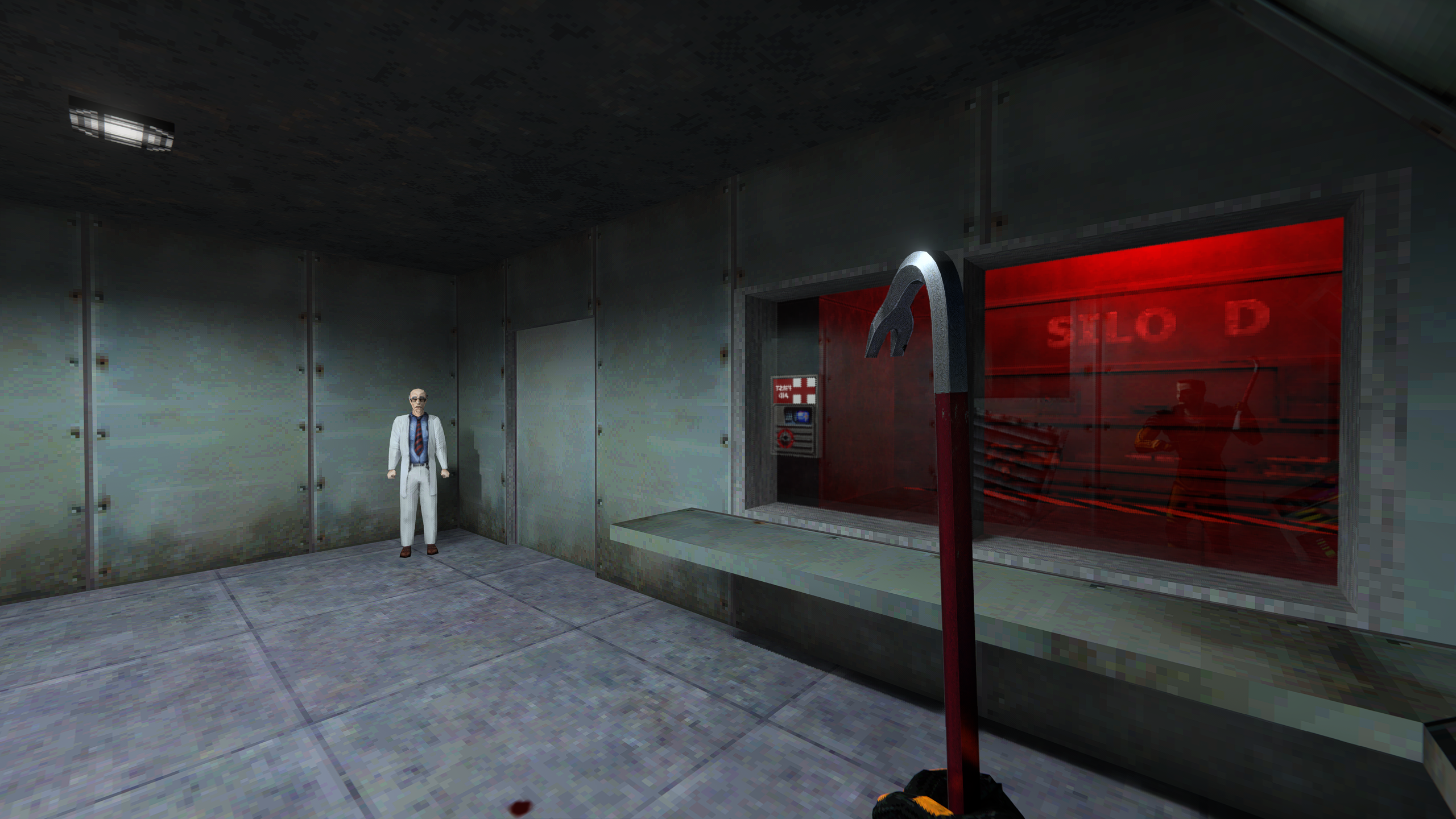
Finally, notice in this screenshot how Gordon's reflection is visible in the room's window pane, as well as how beyond it the red light source above the silo doors bathes the area in red light, whereas the white light in the room with the scientist casts accurate shadows and glints off Gordon's crowbar.
Ok, I hope that gave you a taste of why I've become hooked back on the original Half-Life once more thanks to the quality of this ray tracing mod. And, the best thing is, if you want to enjoy this too then you can for free (providing you own the original Half-Life that is!). You can download the mod at sultim_t's GitHub page.
Screenshots not enough to convince you to download? Well, then you should watch the official Half-Life Ray Traced trailer below.
Rob is editor of PC Gamer magazine and has been PC gaming since the early 1990s, an experience that has left him with a life-long passion for first person shooters, isometric RPGs and point and click adventures. Professionally Rob has written about games, gaming hardware and consumer technology for almost twenty years, and before joining the PC Gamer team was deputy editor of T3.com, where he oversaw the website's gaming and tech content as well its news and ecommerce teams. You can also find Rob's words in a series of other gaming magazines and books such as Future Publishing's own Retro Gamer magazine and numerous titles from Bitmap Books. In addition, he is the author of Super Red Green Blue, a semi-autobiographical novel about games and gaming culture. Recreationally, Rob loves motorbikes, skiing and snowboarding, as well as team sports such as football and cricket.

